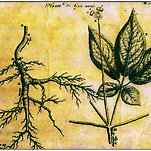|
외래관광객 유치를 담당하고 있을 때, 일본, 중국, 홍콩, 대만 등 주로 아시아 관광객들이 남대문시장 일원에서 많이 구입하는 품목 중의 하나가 고려인삼이라는 것을 알았다. 고려인삼은 이미 세계최대시장인 홍콩인삼시장에서 각광을 받는다고 했다.
그러나, 영국 유학와서 느낀 것이지만, 내가 만난 영국인들은 그리 좋아하지는 않았다. 아마도 기호가 다르기 때문이다.
결국, 이미 40여국으로 수출되고 있는 고려인삼을 어떻게 세계적 상품으로 발전시켜 나가느냐도 중요한 것 같다.
Korean Ginseng -- Medicinal Plant with Wondrous Powers
Introduction Valued as a medicinal plant in Ginseng is used as a restorative or tonic, rather than as a cure for a particular illness. It is generally known to be the most effective in building up stamina, recovering liver functions, slowing the pace of aging, stabilizing blood pressure, strengthening stomach functions, preventing arteriosclerosis and cancer and enhancing immunity. Today, ginseng is cultivated in As far as breed goes, Korean ginseng is a perennial root that belongs to the angelica root family. Its scientific name is Panax Schinseng Nees. Ginseng from other countries also belongs to the angelica root family, but is derived from a different plant. The word panax means "cure-all." It is a combination of pan, meaning "all," and acos or axos, meaning "medicine." The words "schinseng" and "ginseng" are both derived from the Chinese pronunciation of the name of the root. Ginseng is very sensitive to climate and soil, and is thus extremely difficult to cultivate. Different locations make for ginseng of vastly different shape, quality, and medicinal powers. Blessed with the right natural conditions, ginseng can be cultivated almost anywhere in Ginseng grown in the wild, deep in the mountains, is known as sansam (mountain ginseng). It grows in remote areas such as Korean ginseng's reputation began with sansam. In the old days, the search for it was almost a spiritual endeavor for those dwelling in the nation's mountainous regions. Even today there are those who spend their lives wandering around deep valleys looking for the mystical plant. The roots are thinner and longer than the cultivated variety, some as long as 1 meter. Sansam lives between 50 and 100 years and can be stored for up to one year. Cultivated ginseng, on the other hand, lives about 20 years and can be stored for 2 to 3 months. Wild ginseng has a stronger taste and odor than cultivated ginseng and its strong odor takes longer to dissipate. There are numerous medical accounts of sansam's remarkable effectiveness in treating chronic ailments. It is, however, found only rarely, and commands a high price. As a result, cultivation meets nearly all of the demand these days. Scientific research on the effects ginseng took off in the 1950s in both pharmaceutical and clinical studies, unveiling the mystery that had surrounded the plant for thousands of years. Korean scholars have made great contributions to the scientific inquiries into ginseng. They have consolidated the nation's reputation as the home of ginseng in every aspect -- cultivation, treatment and merchandising, and even research. According to existing studies, the primary ingredient that gives ginseng its medicinal quality is saponin, which reduces fatigue, enhances the body's productivity, stimulates the development of sexual glands and brings down the blood sugar level. Ginseng roots can be divided according to the processing method and outer color; bright yellowish white ginseng, which is naturally dried in the sun, and deep reddish-brown red ginseng, which is steamed and sun-dried. Red ginseng was made of only high quality ginseng purchased by the Korea Ginseng Corporation, a government monopoly for the products. The Korea Ginseng Corporation was spun off in the early 1999 from the Korea Tobacco and Ginseng Corporation. The corporation processes six-year-old white ginseng alone to make red ginseng, because ginseng reaches maturity at the age of six years, when the medicinal effects of various substances are at their peak. Red ginseng products have established themselves as one of the nation's biggest export items among agricultural products. They are shipped to about 40 countries, including the |
출처: 삶이 뜨거워 질 때! 원문보기 글쓴이: 진돌이 Jinstar

